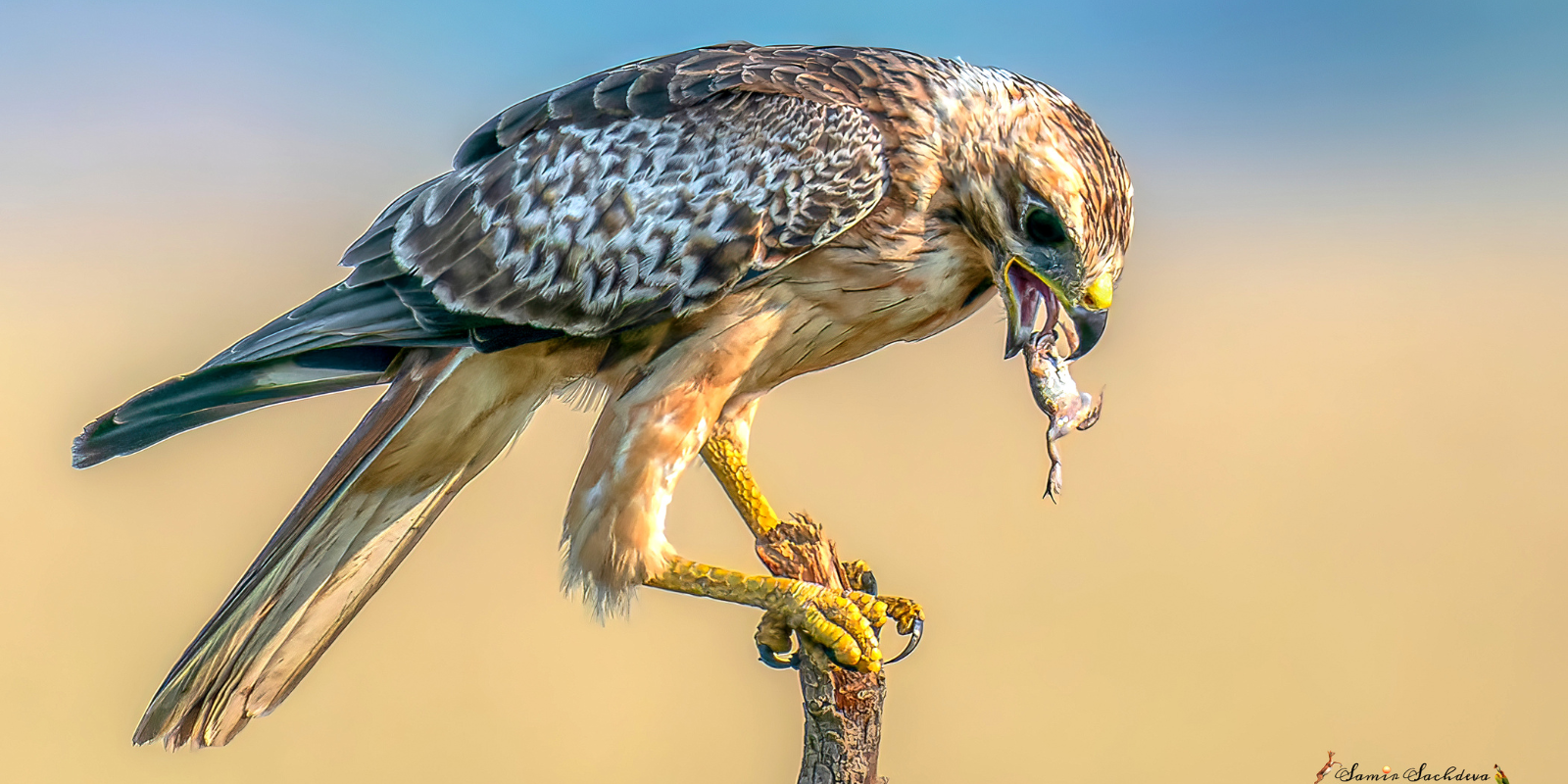
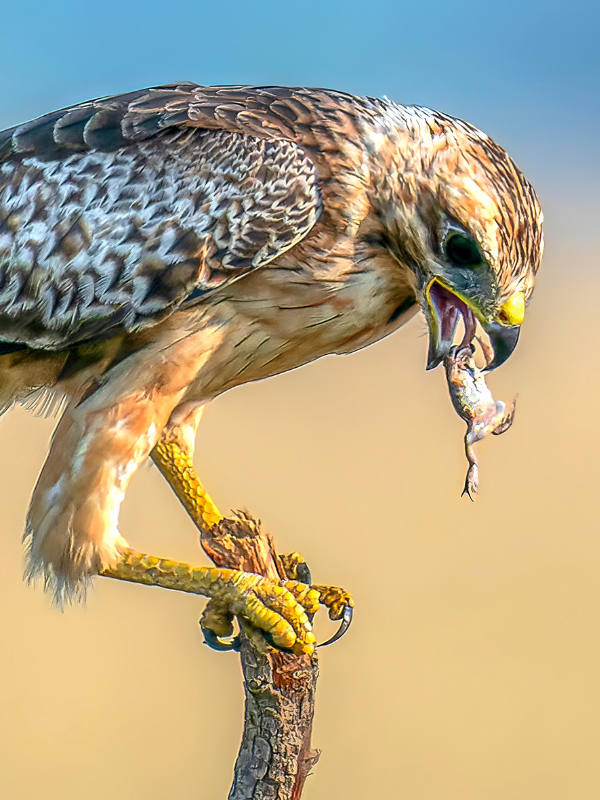
Samir Sachdeva
'Where giants tread softly, hearts resonated deep, a silent thank you, a bond unspoken, a memory to keep!’
The dense jungle hummed with a muted hush, broken only by the occasional chirp of an unseen bird. Sunlight struggled to pierce the leafy canopy, casting long, dappled shadows on the narrow road. This wasn’t just any ordinary path; it was a passage through the heart of Uttarakhand, a thread stitched into the fabric of life for both humans and their wild neighbours.
As I was passing this stretch, I was about to witness something that would forever etch itself onto the canvas of my memories. From the verdant depths emerged an elephant, a titan of the forest, her skin the colour of sunbaked earth. But it wasn’t her immensity that stole my breath; it was the tenderness cradled within her massive frame.

At her side, a tiny shadow mirrored her every step. A calf, barely taller than my knees, its trunk twitching with inquisitive curiosity, clung close to its mother’s side. They walked along the edge of the road, not with wary trepidation, but with a cautious grace that resonated deep within me.
The road, usually bustling with life, had come to a standstill. Cars halted, and drivers and passengers alike were united in a silent vigil. This wasn’t just traffic; it was a testament to the love and respect these people held for the magnificent creatures that shared their land. The silence was profound, punctuated only by the gentle rustle of leaves and the soft thud of the elephants’ feet against the earth.
The mother elephant, aware of the halted procession, did something that sent shivers down my spine. She raised her trunk, not in a gesture of threat, but in a slow, deliberate arc. It wasn’t a trumpeting roar but a silent nod of acknowledgment, a ‘thank you’ whispered in the language of giants.
The air crackled with emotion. A shared breath, a moment of pure, unadulterated connection between humans and this majestic being. It was about understanding, about the unspoken language of compassion echoing through the hushed forest. Such a silent symphony, a rare and profound exchange, was a testament to the coexistence of man and nature, a shared story etched in the hearts of everyone who witnessed that extraordinary moment.
This encounter in the heart of Uttarakhand was more than just a sighting; it was a lesson in humility and reverence for the natural world. As I left the jungle behind, I carried with me not just the memory of the elephants but a renewed sense of wonder and respect for all of nature's giants, and the quiet orchestral works they perform.
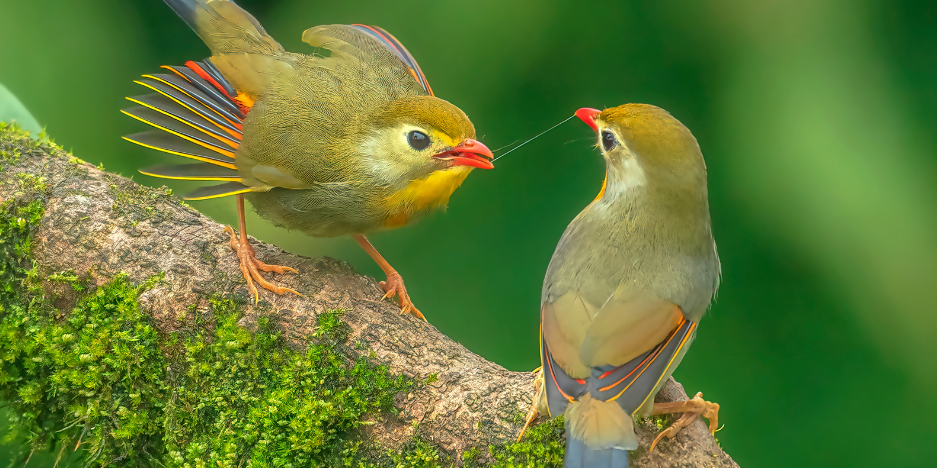
Bond of Love
Never underestimate the love of a father for his child. It may not always be as openly expressed or as visible as a mother’s affection, yet it is priceless and often underappreciated. I came to realise the profound value of paternal care one morning in Deorali, Darjeeling, when I witnessed a Red-billed Leiothrix father feeding his juvenile. This tender moment shed light on the critical role fathers play in the upbringing of their young, a role often shrouded in quiet strength and steadfast dedication.
As I stood quietly, watching the scene unfold, the father Leiothrix flitted about with a sense of purpose. With each delicate morsel he brought to his eager offspring, there was an unspoken promise of protection, nourishment, and guidance. The juvenile, barely out of its nest, looked up with trust-filled eyes, its tiny beak wide open, awaiting the next offering. In this simple act of feeding, I saw the epitome of a father's love—an unwavering commitment to his child’s well-being.
In the avian world, much like in human society, the father’s role can often be overshadowed by the more visible nurturing of the mother. However, it is the father who often provides the structural support that ensures the family's survival. In many bird species, including the Red-billed Leiothrix, fathers are deeply involved in the early stages of their offspring's life. They forage tirelessly, bringing back food and teaching the fledglings how to fend for themselves. This silent contribution is crucial for the development and growth of the young birds.
The image of the father Leiothrix feeding his juvenile has lingered with me every time I visit Deorali. It is a poignant reminder that love is not always loud or demonstrative. Sometimes, it is found in the unwavering presence of a father, in his silent sacrifices, and in the lessons he imparts through his actions.
Safety in Numbers
Sarus Cranes, the world’s tallest flying birds, are indeed majestic and often revered for their grace and impressive stature. By normal standards, these birds are not known to be violent towards other bird species, and this reputation holds true for the most part.
They are generally non-confrontational and peaceful birds, more likely to be seen foraging for food, engaging in elaborate courtship dances, and tending to their nests rather than displaying aggression towards other species. While Sarus Cranes are territorial, especially during the breeding season, their defence of territory is usually limited to displays and vocalisations rather than outright hostility. They may chase away intruders but do not typically engage in prolonged or harmful attacks.
So, what was this? A Sarus attacking and mauling a crow? No. Sarus Cranes are known to be protective of their young and nests. While they generally avoid conflict, they may become aggressive if they perceive a threat to their chicks or eggs. This protective behaviour is typical of many bird species and is not indicative of an inherently vicious nature.
I watched as the Sarus Crane pair foraged leisurely, their young chicks hidden in the nearby grass. A crow, brazen and curious, had already twice been warned by the male Sarus to keep its distance. Ignoring the warnings, the crow ventured too close once more.
In a flash, the male Sarus lunged forward with lightning speed, catching the crow by its leg. It hauled the crow around, displaying its formidable strength and protective instinct. The male then turned to his mate, his gaze stern and admonishing, as if to remind her to be more vigilant.
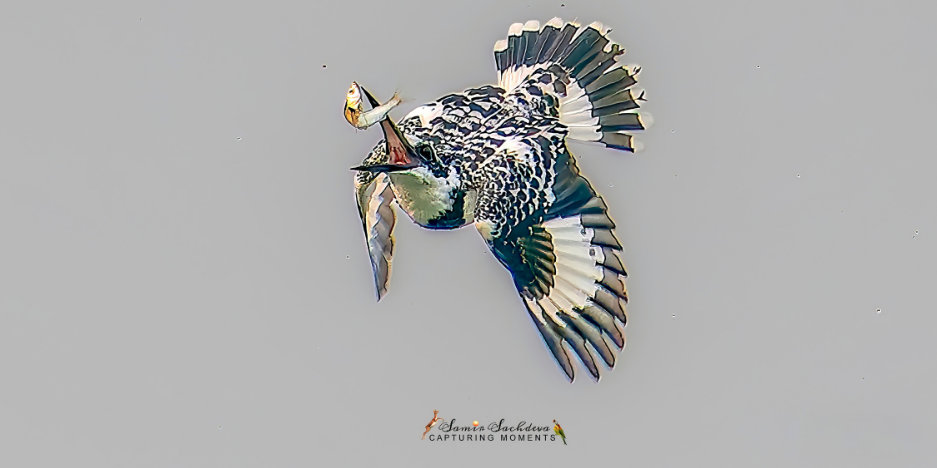
Responding to her mate’s cue, the female Sarus joined in, delivering a few pecks to the crow, reinforcing the lesson. The crow, now thoroughly chastened, was finally released, no doubt with a lesson it would never forget.
This remarkable display of parental protectiveness showcased the Sarus Cranes’ dedication to their young. The swift and decisive actions of the male, followed by the female's support, highlighted the unspoken bond and teamwork between the pair. It was a vivid reminder of the lengths these majestic birds would go to ensure the safety of their offspring.
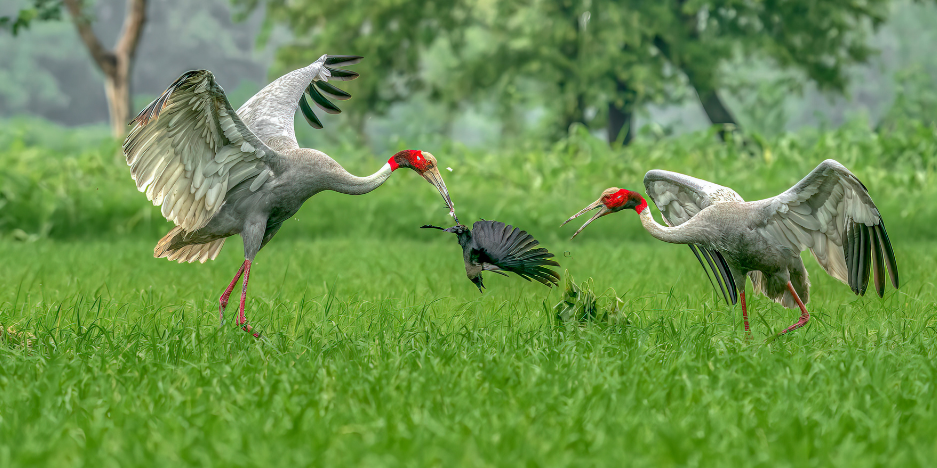
In this act of the cranes, shown by their decision to let the crow go after admonishing it, is their sense of fairness and restraint. Despite their capability to inflict serious damage, they demonstrated a measured response. They acted decisively to protect their young but stopped short of causing unnecessary injury once the threat was neutralised. This behaviour reflects a balance between their protective instincts and a sense of justice, showing that their actions are driven by the need to safeguard their offspring rather than a desire for violence. It also underscores their inherent dignity and respect for life, even when dealing with potential threats.
Read more: The Himalayan Birds – by Kumar Kumud Gangesh (Wildlife Photographer)